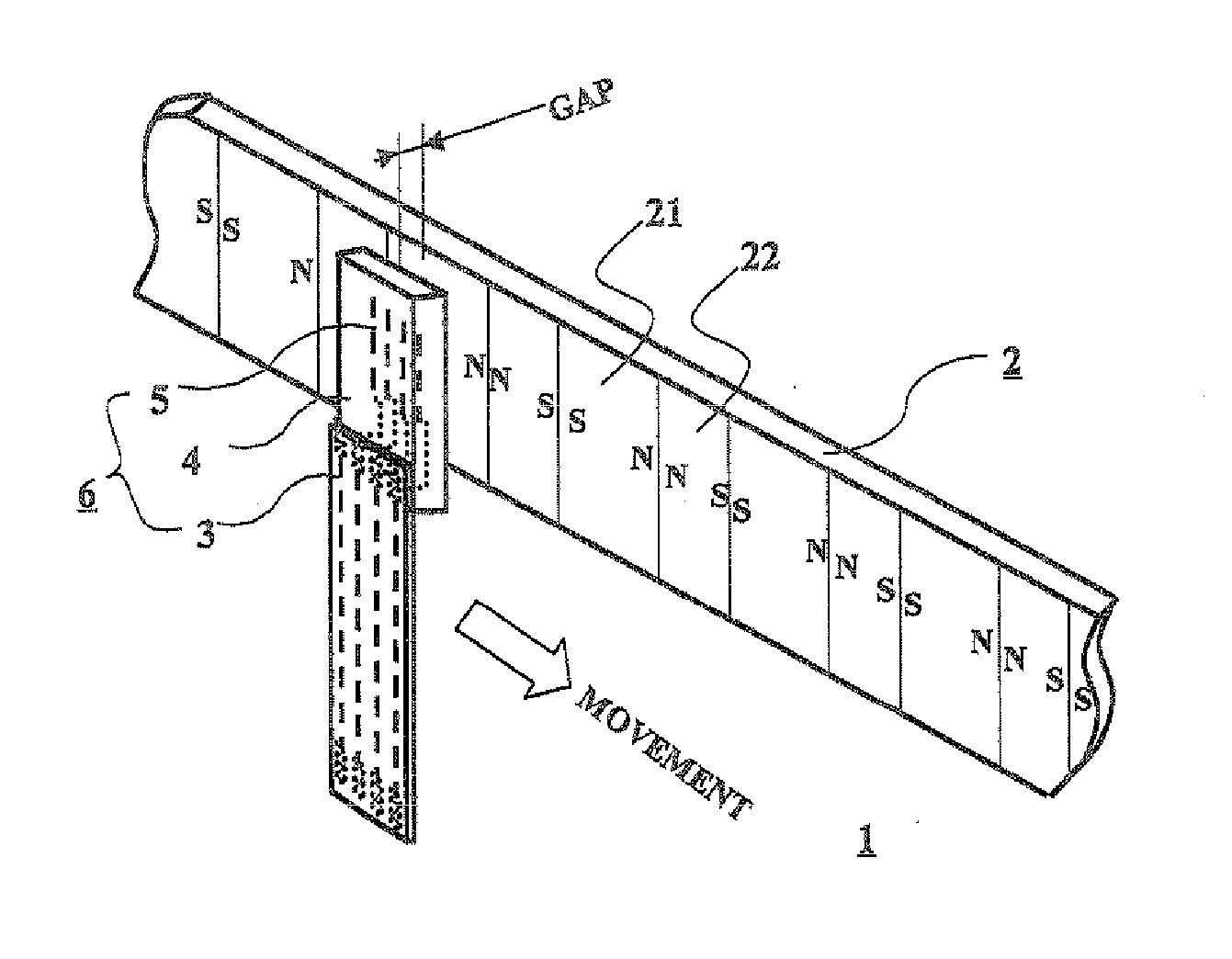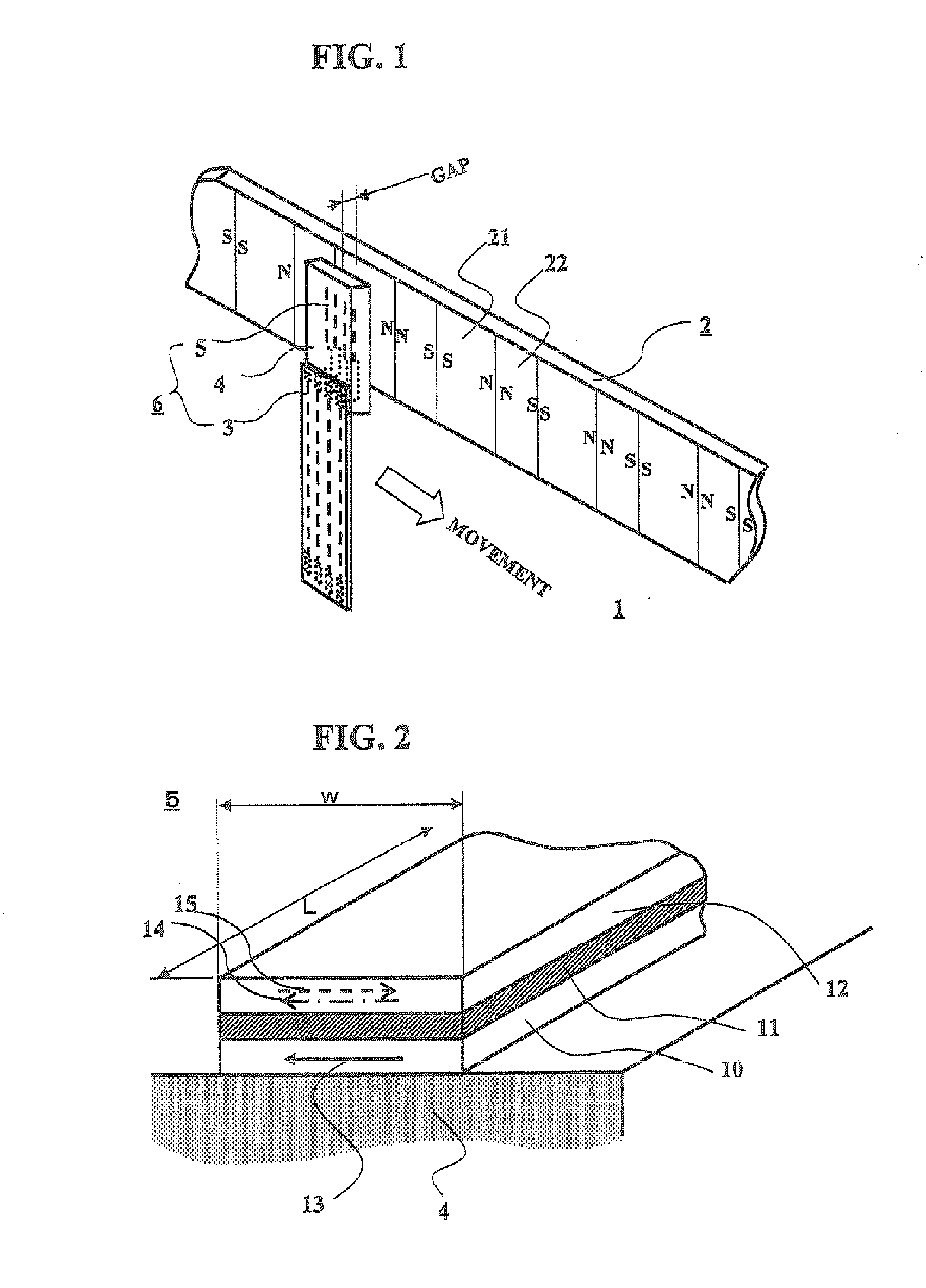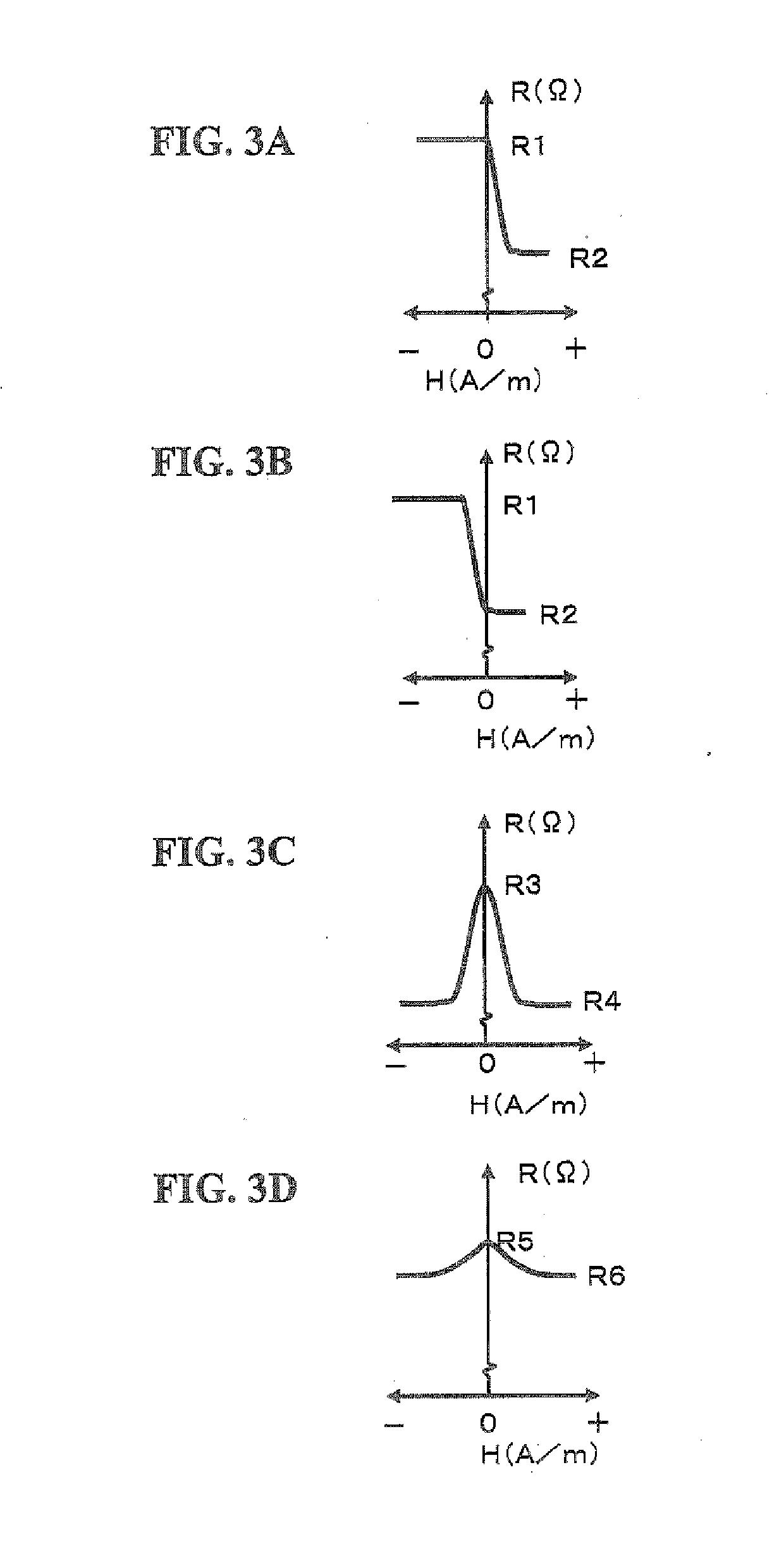Magnetic encoder
a technology of magnetic encoder and encoder, which is applied in the field of magnetic encoder, can solve the problems of low electric power consumption, reduced electric resistance of elements, and difficult use, and achieves the effects of less electric power consumption, large magneto-resistance variation ratio, and large electric resistan
- Summary
- Abstract
- Description
- Claims
- Application Information
AI Technical Summary
Benefits of technology
Problems solved by technology
Method used
Image
Examples
example 1
[0043]FIG. 1 shows a perspective schematic view for explaining a magnetic encoder having SVGMR elements. The magnetic encoder 1 is composed of a magnetic medium 2 and a magnetic sensor 6. On the magnetic medium 2, two magnetized regions, that is, first magnetized regions 21 and second magnetized regions 22, which are magnetized oppositely to each other, are arranged successively and alternately along the medium extending. In the following explanation, it is presumed that the length λl of the first magnetized regions 21 is longer than the length λs of the second magnetized regions 22. In the magnetic sensor 6, plural SVGMR elements 5 are formed in rectangular flat surfaces extending perpendicularly to the magnetic medium 2 extending on a base material 4, and ends of the SVGMR elements 5 are connected through lead wires (not shown) to a flexible print circuit 3. The magnetic medium 2 faces the SVGMR elements 5 having rectangular flat surfaces with a predetermined gap. When the magneti...
example 2
[0047] Referring to FIG. 4, in which a first magnetized region length λl is longer than a second magnetized region length λs on a magnetic medium 2, a work of a magnetic encoder will be described. FIG. 4A explains a location relationship between SVGMR elements 51a to 52b of a magnetic sensor 6 and the magnetic medium 2, and FIGS. 4B to 4F show graphs of electric resistances and an electric signal with respect to a location on the magnetic medium 2 where the SVGMR elements 51a to 52b are. Electric resistance graphs of an SVGMR element 51a of a first sensor 51, another SVGMR element 51b of the first sensor 51, the first sensor 51 composed of the SVGMR elements 51a and 51b, a second sensor 52 composed of SVGMR elements 52a and 52b are shown in FIGS. 4B, 4C, 4D and 4E, respectively. In the magnetic sensor 6, the four SVGMR elements 51a to 52b are disposed on a base material. Each of the SVGMR elements has an element width w, and an SVGMR element is at a distance λ from another in each o...
example 3
[0052] Referring to FIGS. 6A to 6F, a magnetic encoder of EXAMPLE 3 will be described, which is similar to a magnetic encoder of EXAMPLE 2 shown in FIG. 4A with an exception that a magnetic medium 2 has a first region length shorter than a second magnetized region length. FIG. 6A explains a location relationship between SVGMR elements 51a to 52b of a magnetic sensor 6 and the magnetic medium 2, and FIGS. 6B to 6F show graphs of electric resistances and an electric signal with respect to a location on the magnetic medium 2 where the SVGMR elements 51a to 52b are. Electric resistance graphs of an SVGMR element 51a of a first sensor 51, another SVGMR element 51b of the first sensor 51, the first sensor 51 composed of the SVGMR elements 51a and 51b, a second sensor 52 composed of SVGMR elements 52a and 52b are shown in FIGS. 6B, 6C, 6D and 6E, respectively. In the magnetic sensor 6, the four SVGMR elements 51a to 52b are disposed on a base material. Each of the SVGMR elements in each se...
PUM
 Login to View More
Login to View More Abstract
Description
Claims
Application Information
 Login to View More
Login to View More - R&D
- Intellectual Property
- Life Sciences
- Materials
- Tech Scout
- Unparalleled Data Quality
- Higher Quality Content
- 60% Fewer Hallucinations
Browse by: Latest US Patents, China's latest patents, Technical Efficacy Thesaurus, Application Domain, Technology Topic, Popular Technical Reports.
© 2025 PatSnap. All rights reserved.Legal|Privacy policy|Modern Slavery Act Transparency Statement|Sitemap|About US| Contact US: help@patsnap.com



